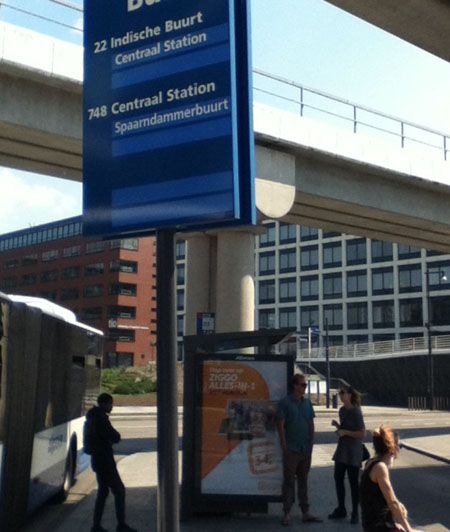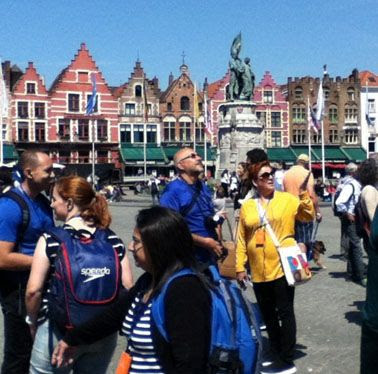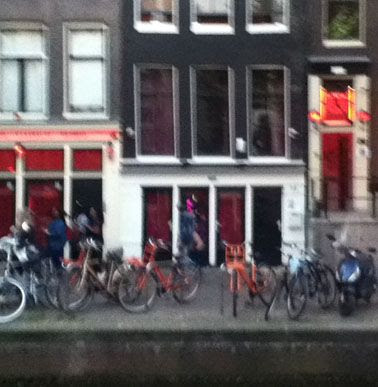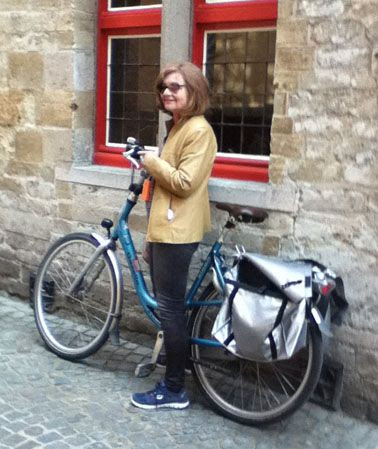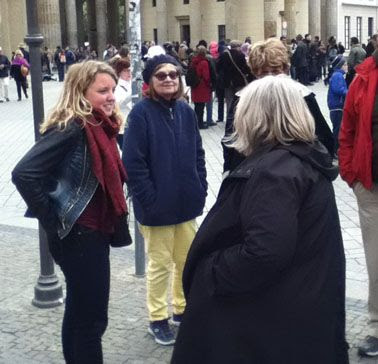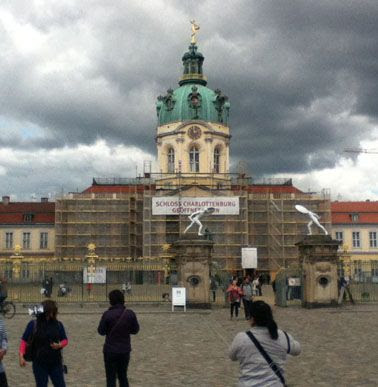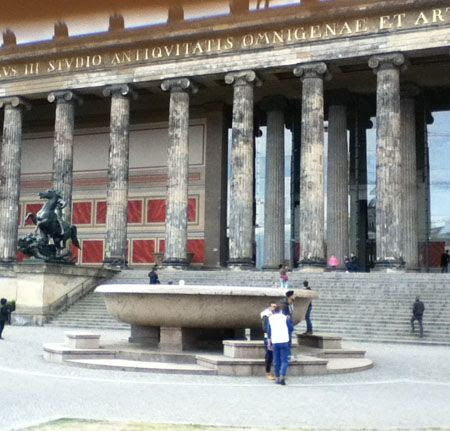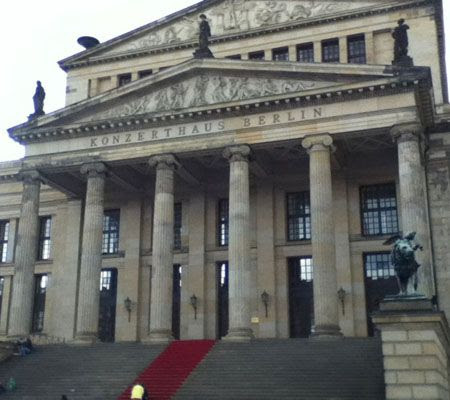Citizen X reports on Amsterdam, Bruges, and Berlin, Spring 2016 .. more to come later (well, maybe)
Jun 4th, 2016 | By Citizen X | Category: Countries of the World
As previously noted, the managing editor assigned me the task of reporting on the recent offshore conference, “Northern Europe (and Russia) in the spring of 2016” – from which everyone on the counterweights staff returned safe and sound, late last week.
It is a task I have accepted in the past. But this year I rebelled. Immediately upon arrival in Amsterdam on the morning of May 12, Ms X and I bolted to a cruise ship party, at the Holiday Inn Sloterdijk Station.
We hung out in Amsterdam on the afternoon of the 12th, along with our partners in crime, Mom & Pop Y (or is it Z?). For me Amsterdam remains “The more I see you / The more I want you.”
On the 13th we took a three-hour bus ride to “Bruges (French), Brugge (Dutch)” in Belgium. Its historic centre is “an outstanding example of an architectural ensemble, illustrating significant stages in the commercial and cultural fields in medieval Europe.”
In a another lexicon Bruges is  “a fairy-tale medieval town … cobbled lanes and dreamy canals … market squares lined with soaring towers.” It struck me as a worthwhile tourist trap.
It has been playing this role for a while now. According to Wikipedia : “In the last half of the 19th century, Bruges became one of the world’s first tourist destinations attracting wealthy British and French tourists.”
Our trip to Bruges from Amsterdam also introduced us to the first of three engaging female tour guides, with strong interests in history. Our bus ride was enlivened by our guide’s account of the remarkable creation of “polders” (ie “any piece of land reclaimed from water”) – in a region where as much as 25% of the current territory is below sea level.
Our guide also wisely warned against the “killer bikes” in Amsterdam. And she explained how  Netherlands citizens look down on “stupid Belgians” (of both French- and Dutch-speaking persuasions), whose only contributions to global humanity are chocolates, waffles, smurfs, and the EU capital city.
Finally, on the morning of May 14 we headed straight from the Holiday Inn Sloterdijk Station to Passenger Terminal Amsterdam, where we joined our cruise ship. Its “12 Night Scandanavia & Russia Cruise” had the same destinations as the counterweights offshore conference “Northern Europe (and Russia) in the spring of 2016.”
Our ship would stop first at “Warnemunde (for Berlin),” Germany. Then it would be “Tallinn, Estonia,” followed by “St. Petersburg, Russia” (the alleged jewel in the crown, for two days). And then : Helsinki, Finland ; Â Stockholm, Sweden ; and Copenhagen, Denmark.
In the end managing editor MacDonald agreed that I could fulfill my current obligations by posting a few short notes on each of these six destinations. (And a very few concluding words of deep reflection on the cruise ship syndrome today and the 2016 US election.)
For all and any who may or may not be interested, at least some of these notes can be accessed by clicking on “Read the rest of this page” and/or scrolling below. I see them myself as something like “Cruising the North Sea, the Baltic Sea, and the Gulf of Finland – all vaguely similar northern places Canadians should know more about than we typically do, etc, etc, etc …”
1. An Early 21st Century Holiday Monday in Berlin …
It was another three-hour bus ride from “Warnemunde (for Berlin)” to the current united Berlin in the united Germany under Angela Merkel (originally from the East!).
It was worth it because of the tour guide – the altogether excellent Lorna Cannon, already famous enough on the BBC website and in such publications as The Maybachufer : English Language News from Berlin.
Somewhat unusually, Monday, May 16 – the day of our Berlin excursion – was “Whit Monday”or the “Monday after Pentecost,” currently celebrated as a holiday in such places as Belgium, Denmark, France, Germany, the Netherlands, and so forth. (Sunday, May 15, in case you’re counting, was a day ”At Sea.”)
This meant one big countryside traffic jam on the bus trip there, and presumably a somewhat different crowd in the city than on a more ordinary Monday afternoon. But in most places we went there were already so many other tourists that it didn’t really matter.
LORNA’S TOUR STARTS AT THE SCHLOSS CHARLOTTENBURG
In what follows I have written far more about Berlin than I should have. In any case, Lorna’s Whit Monday tour started at the Schloss Charlottenburg – “a Baroque palace … in Berlin’s western Charlottenburg district … burned to the ground during the Second World War but … completely reconstructed” today (though also right now “closed for renovation until 2017”).
From here you proceed in your tour bus along Otto-Suhr-Allee to Ernst Reuter Platz and Strasse des 17. Juni. Then you drive along Strasse des 17. Juni to and through the giant public park known as the Tiergarten (larger than Central Park in New York), and past the 1873 Siegessäule Victory Column moved by the Nazis to the Grosser Stern roundabout in 1938.
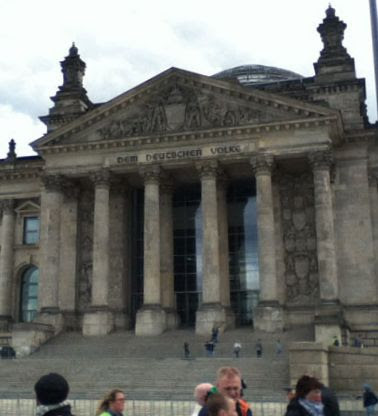
The Reichstag building, current home of the Bundestag or parliament of the reunified Federal Republic of Germany.
Just as the Tiergarten ends, drive a little north and stop to get out and admire the Reichstag building, home of the German parliament. It first opened in 1894. The “iconic words Dem Deutschen Volke (‘[To] the German people’)” were “carved above the main façade of the building” in 1916. Today, as renovated in the 1990s under the leadership of British architect Norman Foster, the Reichstag building houses the institution now officially known as the Bundestag – the parliament of the (reunified) Federal Republic of Germany.
(Also note, in front of the Reichstag building, the Memorial to the Murdered Members of the Reichstag – commemorating “the 96 members of the parliament who died unnaturally” during the Nazi era from 1933 to 1945, and erected in September 1992.)
LUNCH ON HANNAH ARENDT STRASSE
From here we proceeded south to the Brandenburg Gate, where, as it were, Strasse des 17. Juni turns into “Unter den Linden, a grand boulevard that cuts through the center of Berlin.” Â The Brandenburg Gate was first opened in 1791. Much later it became part of the Berlin Wall 1961—1989 – and the new “symbol of a reunified Berlin … when the Berlin Wall fell in 1989.”
Just a little south of the Brandenburg Gate is the Berlin Holocaust Memorial (“officially named the Monument to the Murdered Jews in Europe”), opened in 2005. Designed by the US architect Peter Eisenman, it is “made up of 2,711 concrete slabs that bear no markings, such as names or dates.” According to Lorna Cannon, Eisenman’s design invites each visitor to come to his or her own understanding of what the holocaust means.
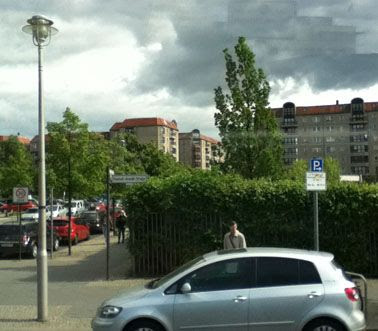
A little south and west of this spot on Hannah Arendt Strasse in Berlin is the site of the bunker where Adolf Hitler killed himself, on April 30, 1945.
At this point in our tour we stopped for a brief late lunch – at a surprisingly good restaurant (and adjacent public washroom) near the intersection of Hannah Arendt Strasse and Cora Berliner Strasse, close to the Holocaust Memorial. I bought a map at a souvenir shop near the restaurant, and Lorna showed me where we were on the map.
Just as we were leaving on our bus, to return to Unter den Linden, Lorna pointed out the site of the bunker where Adolf Hitler and Eva Braun committed suicide on April 30, 1945, a little south again of Hannah Arendt Strasse. Then our genial and unilingual German driver (Otto?) went east on Unter den Linden, past such sites as Humboldt University.
TO THE EAST SIDE GALLERY AND BACK TO THE LUSTGARTEN
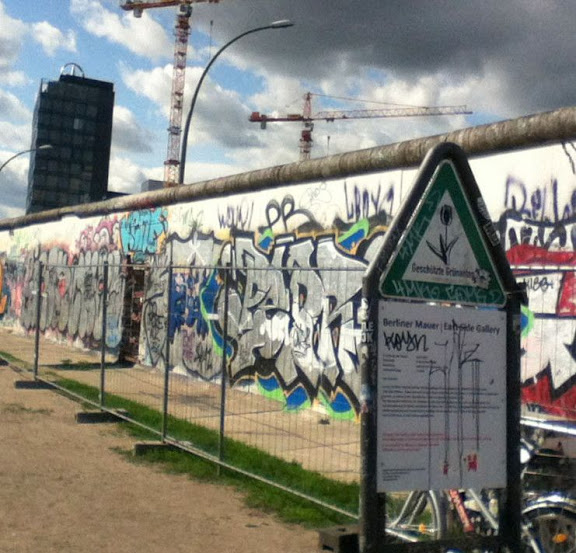
The East Side Gallery in Berlin – “an international memorial for freedom.” Also note a comment from Lorna : “Berlin does not have an interesting skyline : it’s full of cranes.”
Soon enough we crossed the Spree River and proceeded south on such arteries as Holzmarktstrasse to the East Side Gallery. According to Wikipedia : “The East Side Gallery is an international memorial for freedom. It is a 1.3 km long section of the Berlin Wall located near the centre of Berlin on Mühlenstraße … The Gallery consists of 105 paintings by artists from all over the world, painted in 1990 on the east side of the Berlin Wall.”
More recently, the East Side Gallery has also attracted some (in Lorna’s words) “disrespectful” graffitti – presumably the reason for the present-day fencing we saw as well.
From here we just retraced our steps (or bus tire marks) back to Unter den Linden, where we stopped for a visit to assorted museums and the Berliner Dom (“largest protestant church in Berlin”) in the Lustgarten.
The attractions of the restored Lustgarten today include the Altes Museum (Old Museum), with its impressive bullet-pock-marked columns – which (Lorna pointed out) served as a dramatic backdrop for some of Hitler’s “mass rallies of up to a million people.”
GENDARMENMARKT SQUARE, CHECKPOINT CHARLIE, AND TOPOGRAPHIE DES TERRORS
Lorna’s tour ended somewhat south of Unter den Linden with flourishes in several directions, aimed no doubt at several different kinds of tourists. The best for me was the “harmonious Gendarmenmarkt …  known as one of the most beautiful squares in Europe.”
I was especially impressed by the “three buildings which make up the spectacular ‘trinity ensemble’ in the Gendarmenmarkt square” : (1) the Konzerthaus or Concert Hall, built in 1821  by “Berlin’s famous architect, Karl-Friedrich Schinkel” ; (2) the  Französische Dom (or French Cathedral), built between 1701 and 1705 (and then added to in 1785) by persecuted Huguenots or French Protestants, seeking “refuge in Protestant Berlin” ; and (3) the Deutscher Dom (or German Cathedral), a 1708/1785 “twin” to the Französische Dom across the square.
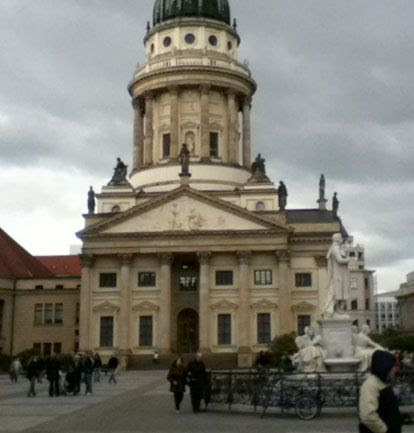
The French Cathedral in Gendarmenmarkt – twin of the Deutscher Dom. The statue to the right in this photo is of the German poet, philosopher, physician, historian, and playwright, Friedrich Schiller (1759—1805).
All three buildings were seriously damaged and worse during the Second World War, and have been subsequently restored and rebuilt. Ms X and I briefly visited the Deutscher Dom, which now houses five floors of intriguing exhibits on the history of German parliamentary democracy, from “the revolution of 1848/49” to the more or less present day.
Ms Cannon’s two final flourishes included a mere passing-by (to her credit) of “Checkpoint Charlie” – the “only place at which foreigners visiting Berlin could cross from West to East and back again” from 1962 to 1989, and “the subject of many movies and … spy novels penned during the Cold War era.”
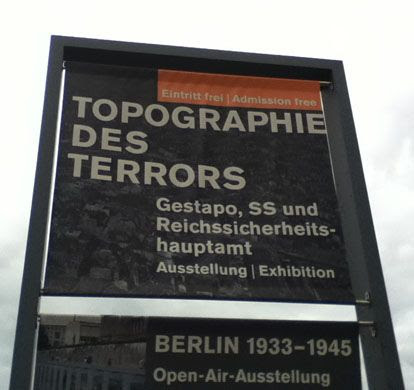 Then Lorna finally left us in the good hands of a quite recent building with elegant large public washrooms – Â housing an exhibit on the “Topographie des Terrors … Berlin 1933—1945.” She said her goodbyes on the bus before we left, and proposed a round of applause for the bus driver.
Then Lorna finally left us in the good hands of a quite recent building with elegant large public washrooms – Â housing an exhibit on the “Topographie des Terrors … Berlin 1933—1945.” She said her goodbyes on the bus before we left, and proposed a round of applause for the bus driver.
The driver received another round of applause when he managed to get us back to our cruise ship at the port of Warnemunde  in less than three hours. Soon after we arrived, the big boat (a marvel of modern engineering in its own right) set out on the next leg of our journey, just before midnight. At that point we were all in the Ocean View Café on deck 14 for a late-night snack.
2. The various mysteries of Tallinn, Estonia
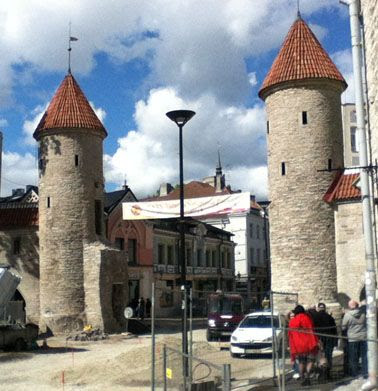
Viru Gate to the old city at Tallinn (formerly Reval), just one more thing in northern Europe today under renovation.
Just in case there are still a few readers persevering, I really can’t carry on at this length, and I am going to change RIGHT NOW …
In many ways our ship’s visit to Tallin, Estonia, from 10 AM to 5 PM on Wednesday, May 18, was a return to the worthwhile medieval tourist trap in Bruges. (Btw for those watching the calendar again, May 17 was another much appreciated day At Sea.)
Along with Mom and Pop Y (or Z?), Ms X and I  just took the cruise ship shuttle bus to the edge of the old city in Tallinn  …
CITIZEN X REGRETS : UH OH … This is taking up far more time than I planned on – time I don’t seem to have right now … At some point I hope to come back and complete these notes, for which I have collected far too much source material.
That is no doubt part of the problem …
Anyway for the time being I’m going to try to get the managing editor to agree that one far too long report on Berlin is at least as good as six very short notes on all six destinations …
Meanwhile, my apologies to all involved … Â It seemed best to post at least what I did manage to get done … Â And leave these global villager travels behind us for now. Summer in the city is drawing near … Â It is time for the counterweights staff to get back in action, and stop saying everything must wait until I finish this report … (which could be a very, very long time).
